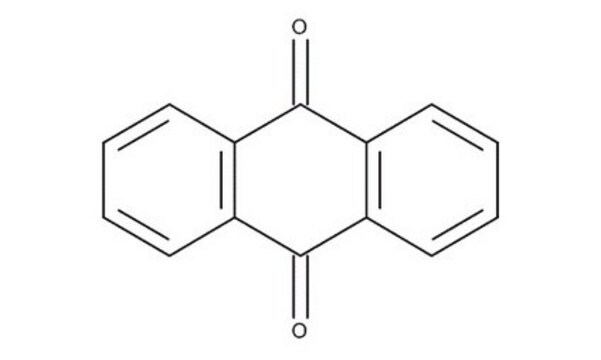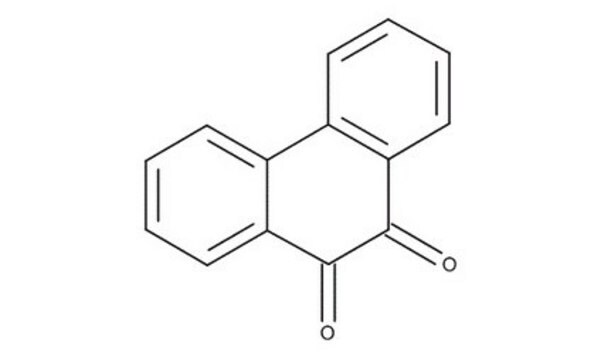About This Item
Polecane produkty
klasa czystości
analytical standard
gęstość pary
7.16 (vs air)
ciśnienie pary
1 mmHg ( 190 °C)
opakowanie
ampule of 1 g
producent / nazwa handlowa
Chem Service, Inc. PS-926
metody
HPLC: suitable
gas chromatography (GC): suitable
tw
379-381 °C (lit.)
mp
284-286 °C (lit.)
format
neat
ciąg SMILES
O=C1c2ccccc2C(=O)c3ccccc13
InChI
1S/C14H8O2/c15-13-9-5-1-2-6-10(9)14(16)12-8-4-3-7-11(12)13/h1-8H
Klucz InChI
RZVHIXYEVGDQDX-UHFFFAOYSA-N
Szukasz podobnych produktów? Odwiedź Przewodnik dotyczący porównywania produktów
Zastosowanie
Hasło ostrzegawcze
Danger
Zwroty wskazujące rodzaj zagrożenia
Zwroty wskazujące środki ostrożności
Klasyfikacja zagrożeń
Carc. 1B - Skin Sens. 1
Kod klasy składowania
6.1C - Combustible acute toxic Cat.3 / toxic compounds or compounds which causing chronic effects
Klasa zagrożenia wodnego (WGK)
WGK 1
Temperatura zapłonu (°F)
482.0 °F - closed cup
Temperatura zapłonu (°C)
250 °C - closed cup
Wybierz jedną z najnowszych wersji:
Certyfikaty analizy (CoA)
Przepraszamy, ale COA dla tego produktu nie jest aktualnie dostępny online.
Proszę o kontakt, jeśli potrzebna jest pomoc Obsługa Klienta
Masz już ten produkt?
Dokumenty związane z niedawno zakupionymi produktami zostały zamieszczone w Bibliotece dokumentów.
Nasz zespół naukowców ma doświadczenie we wszystkich obszarach badań, w tym w naukach przyrodniczych, materiałoznawstwie, syntezie chemicznej, chromatografii, analityce i wielu innych dziedzinach.
Skontaktuj się z zespołem ds. pomocy technicznej








